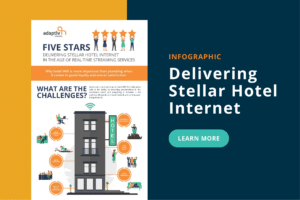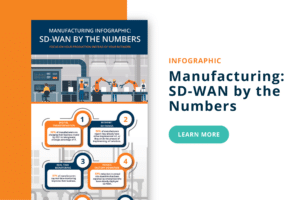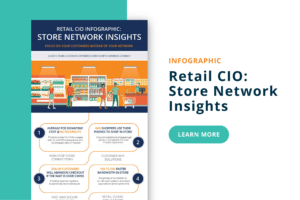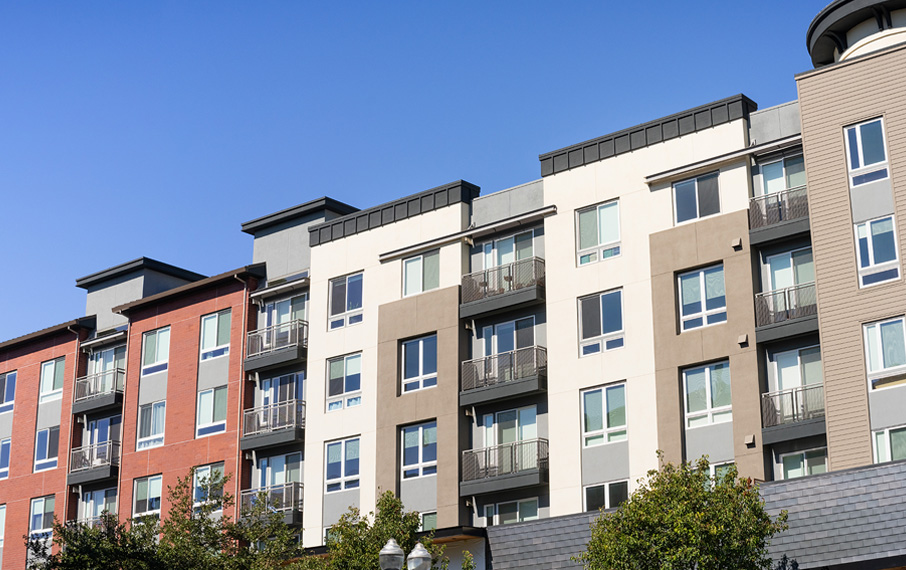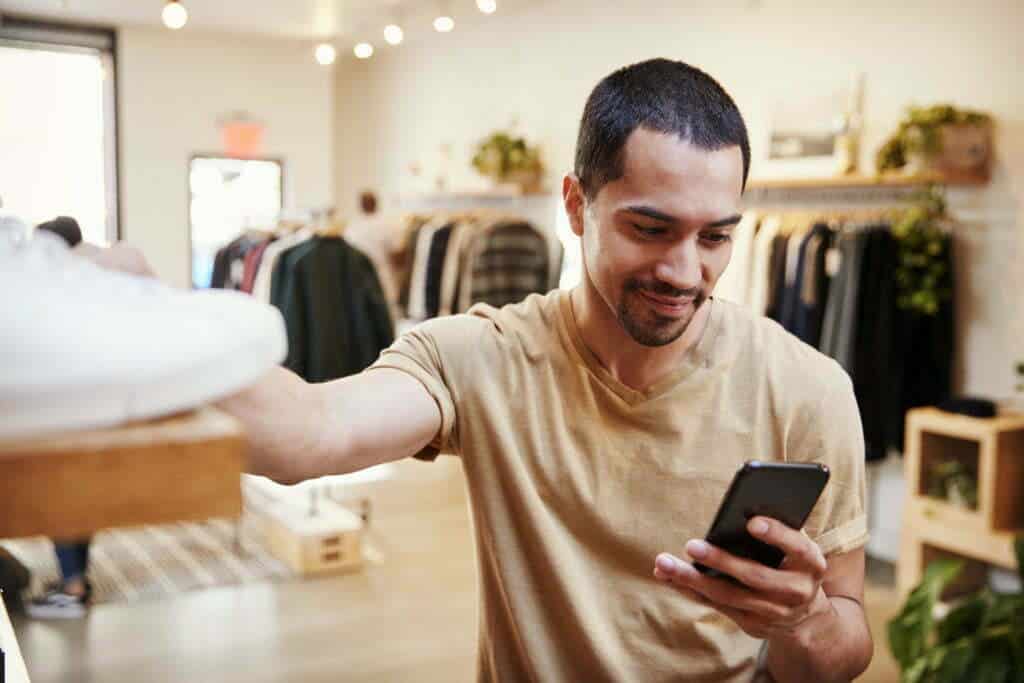
The need and value of brick-and-mortar for retailers and consumers haven’t changed. What’s changing is the experience consumers expect within the 4 walls of a brick-and-mortar store. How future shoppers will connect the digital and physical shopping experiences is still evolving and the path isn’t yet completely defined. What we do know is consumers are open to more personalized and immersive digital shopping experiences that offer a higher level of customer satisfaction. Consumers are also very quick to share their experiences (both good and bad) on social platforms. As a result, social media can make or break a retail brand based upon how well it meets changing shopper expectations. The key to sustaining customer loyalty is being innovative and competitive.
As retail innovation drives forward, the concept of a connected shopper and the importance of the store’s underlying network connectivity becomes front and center. Technology is helping retailers elevate in-store shopping experiences while also saving on operational costs. Here are three emerging retail technology trends that show how Adaptiv Business Connect is enabling the Store of the Future.
Augmented Reality
Augmented reality (AR) is not a new technology. It’s been around for several years and has popped up in retail use cases from time to time. Augmented reality received more attention when Pokemon GO became a worldwide phenomenon in July of 2016, which saw 50 million downloads, in the first 19 days of launch. It proved that users were eager for a new and creative digital experience and that AR was attainable by leveraging the camera on mobile devices.
Projections indicate that in 2020, AR will generate $120 billion in revenue. Smart retailers are looking to adapt and find new ways to leverage this technology to enhance the customer’s in-store experience. In fact, we are already seeing retailers and brands working together to launch virtual change rooms, cosmetic magic mirrors, digital playgrounds, and visualization apps for interior design.
The bar will continue to rise as AR technology improves and consumers become more accustomed to it. Retailers looking to differentiate themselves by incorporating an augmented reality application need to ensure their store network is up to the task. The customer AR experience can be boosted through faster store connectivity, and Adaptiv Business Connect ensures your network has the speed and intelligence to deliver a rich AR experience through guest Wi-Fi. Multi-link aggregation makes it easy to increase bandwidth while cloud-managed security ensures all your store operations are isolated and encrypted.
Point of Sale (POS)
Many retailers are looking at options to modernize the concept of the checkout lane or even remove it completely. In January 2018 Amazon opened its first public Seattle “Amazon Go” store after testing for a year with its employees. The store allows customers to fill their grocery baskets and walk out without having to open their wallets. The idea is certainly catching on: big box wholesaler, Sam’s Club, offers a “Scan and Go” app, allowing customers to scan items as they shop, pay from their phones, and skip the check-out line altogether.
A more proven technology is the self-checkout machines that have popped up everywhere from grocery stores and pharmacies, to movie theaters and big-box retailers. Whether you love them or hate them, they are here to stay. Retailers can view the self-checkout lanes as both a cost-savings option to reduce staff and an added customer value to ensure faster checkout times during peak business hours.
Whichever checkout technology you choose, one thing is certain downtime means lost revenue. Retail industry studies show that 33% of shoppers will abandon a purchase if the wait time is over 5 minutes. Retailers who can’t afford to be disconnected use Adaptiv Business Connect to keep their store networks connected through link outages. Digital payment processing applications get the highest priority for faster customer checkouts, and seamless failover keeps the entire store connected automatically though link outages, even in-flight payment transactions survive.
Pop-up Shops
There is no lack of available retail space across the United States. 2019 saw the highest number of store closures since the recession in 2008. According to CNN Business more than 9,300 stores closed their doors in 2019. With such high numbers, retailers have become more cautious about committing to a long-term lease. Deciding between investing more in eCommerce vs adding brick-and-mortar stores is a hard decision to make. The concept of a temporary store with a short-term lease has become extremely popular for many brands wanting to test out a new market without the commitment. “Pop-up Shops” were proven in late 2016 and early 2017 by the youngest Kardashian, Kiley Jenner, who took her online empire of lip kits to a physical space. Shoppers camped out overnight and lined up for hours to check out Kiley’s product in a traditional store setting, proving that consumers still crave an in-store experience.
How does Adaptiv Networks support your Pop-up Shop goals? By saves you time and money. Adaptiv Business Connect runs on any low-cost internet connections that are locally available, saving you about 50% on bandwidth compared to MPLS. Plus, you won’t have to wait weeks or even months for the big carriers to install dedicated access circuits. Adaptiv Business Connect installations are done remotely, so you can get your Pop-up Shop online in minutes without needing specialized on-site IT support. Adaptiv Business Connect lets you quickly create a secure and reliable high-speed store network that’s professionally managed, allowing you to focus on your customers instead of your network.
Conclusion
Whether you’re looking to build the store of the future, maintain current market share or just save on store operational costs, a fully managed Adaptiv Business Connect solution can help. We have worked with numerous retail brands from large national chains to small single-site shops, helping to revolutionize store networks and improve experiences for employees and customers. If your network is holding your back, contact us, to start planning your Store of the Future today!


